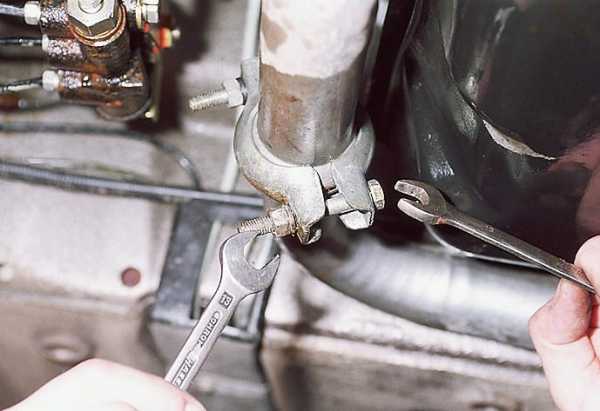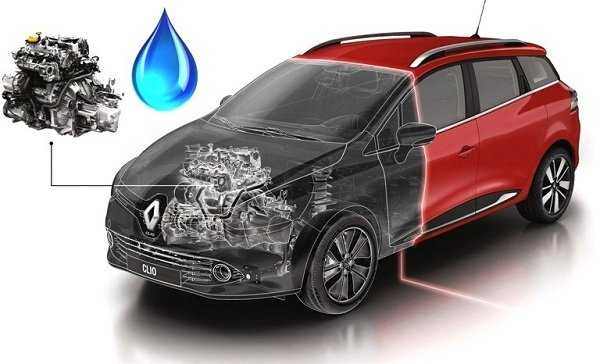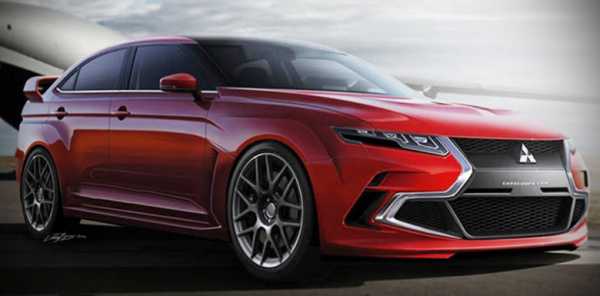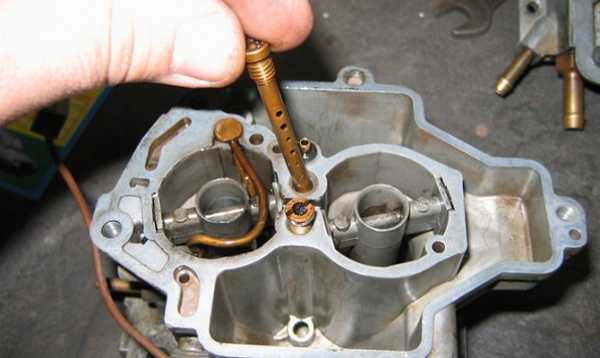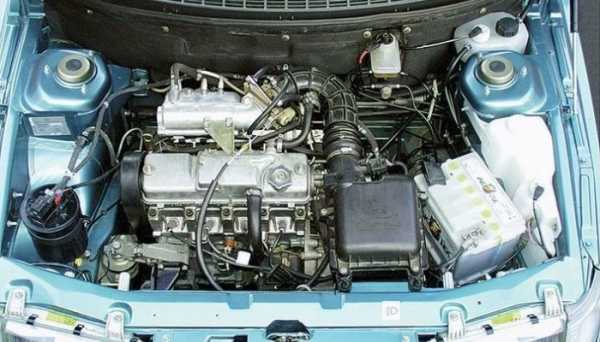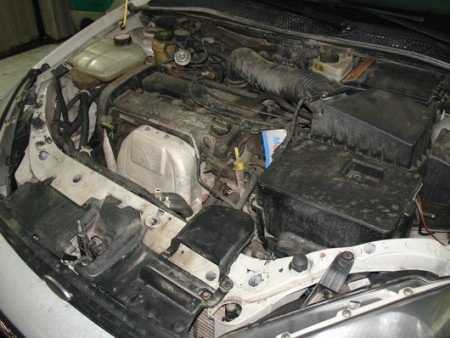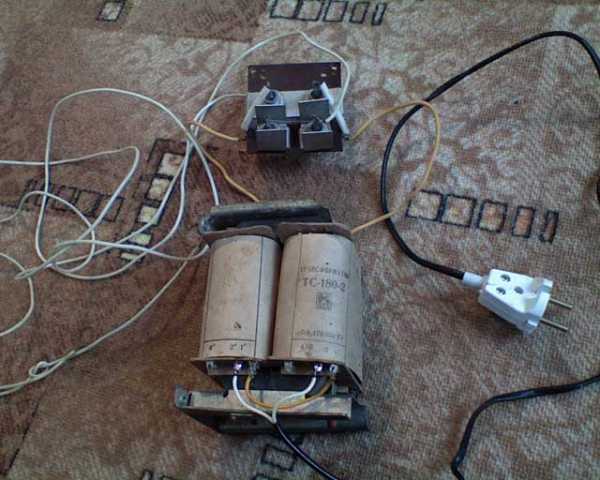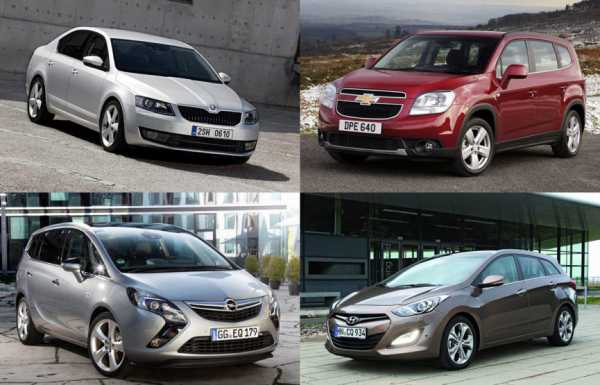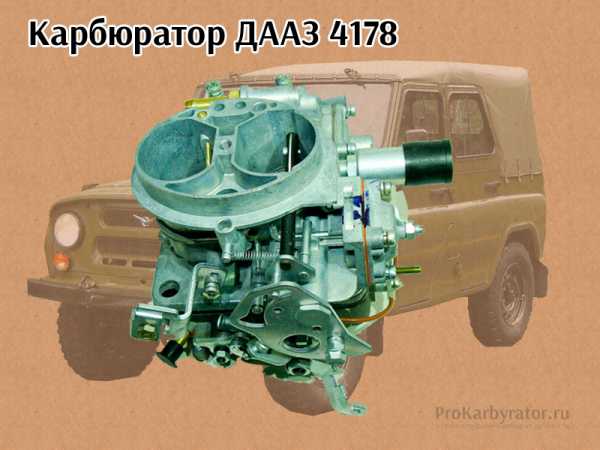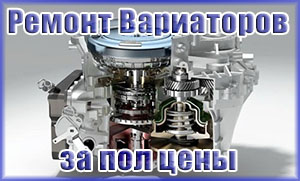Dodge srt viper
Dodge Viper SRT10 Raceport на DRIVE2.RU
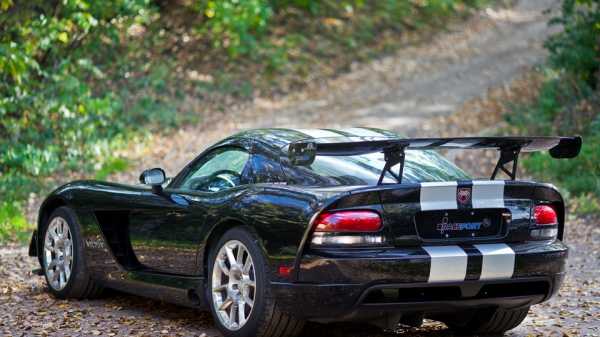
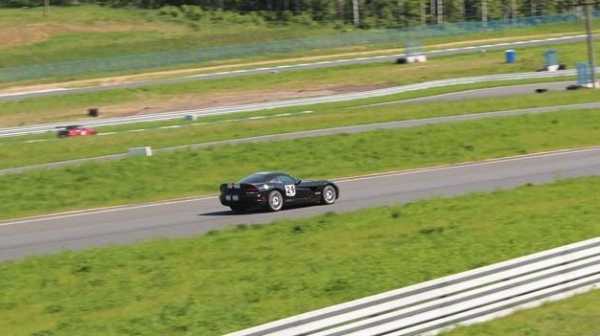
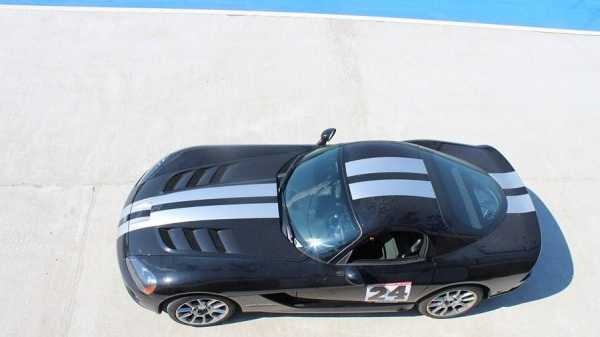
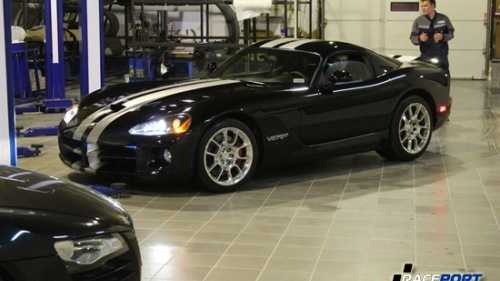
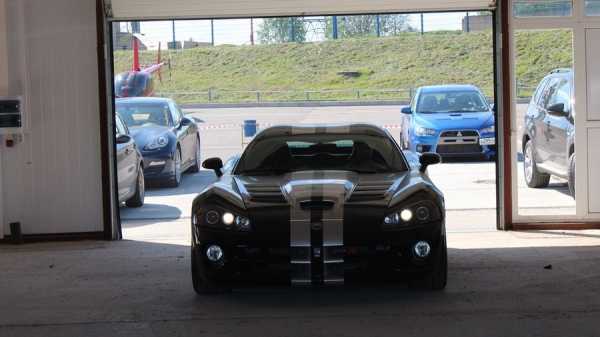
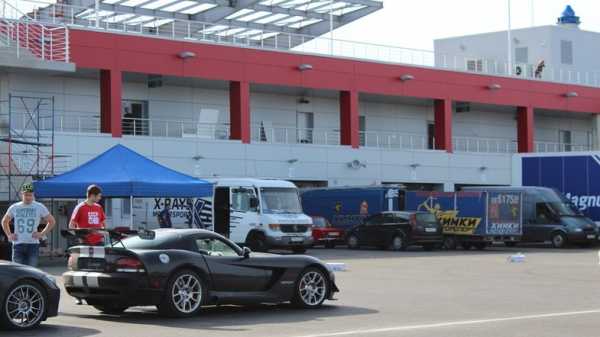
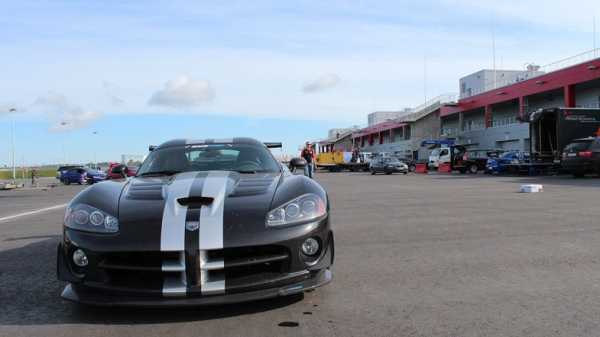
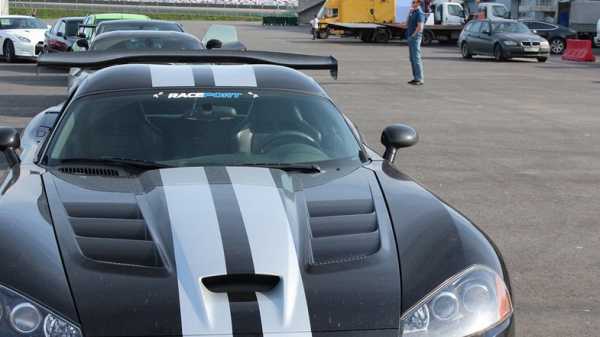
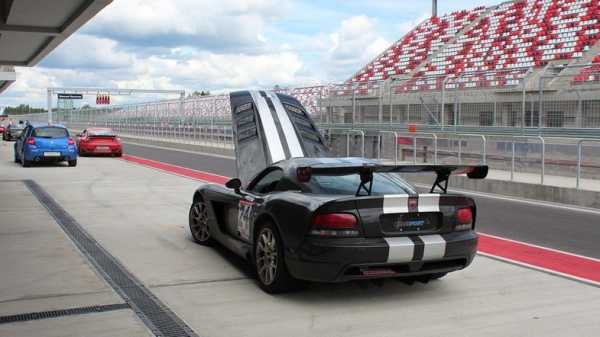
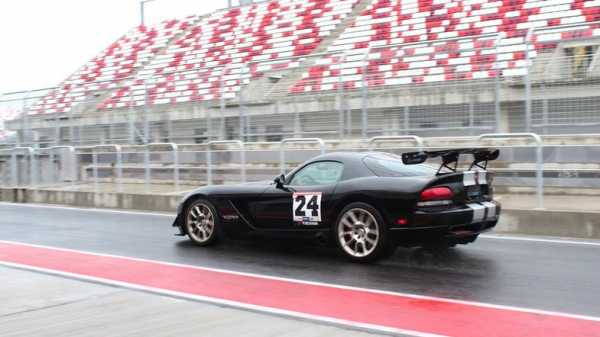
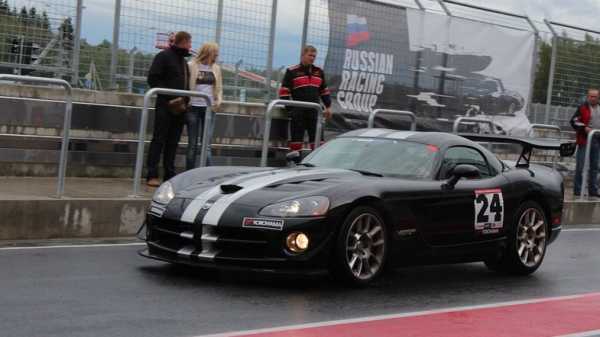
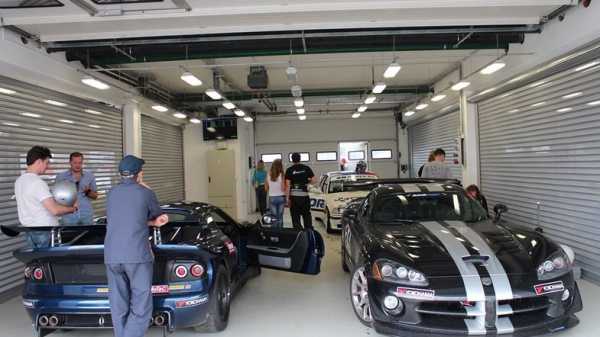
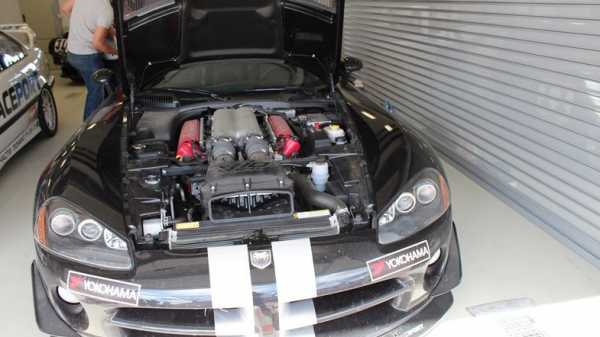
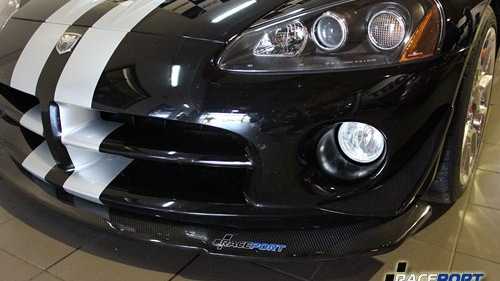
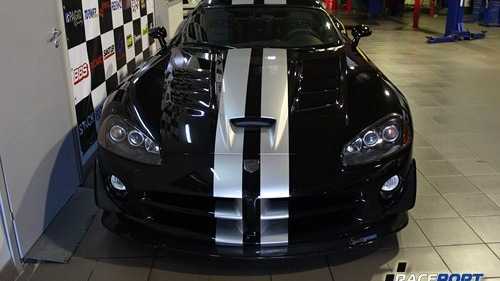
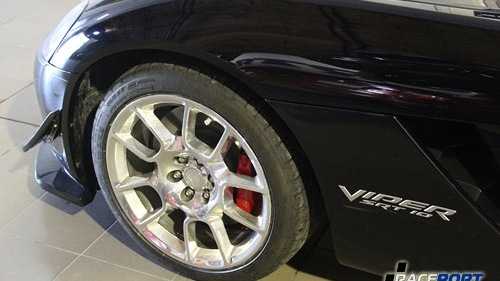
Dodge Viper — по своему легендарный автомобиль, один из лучших спорткаров Америки.
Четвертое поколение — мотор 8.4 612сил.Известен своей недружелюбностью по отношению к водителю, брутальной управляемостью, и рекордным объемом мотора.Автомобиль приобретался с целью использования в основном на треке (так как пытаться реализовать всю его мощь в городе глупо и опасно).Первоначально искалась версия ACR — с заводским аэродинамическим обвесом, с другой подвеской, и на полусликах.
Но выбор пал на обычную версию, с маленьким пробегом из Америки.
По опыту вождения можно сказать, что легенды о нереальной НЕуправляемости вайпера сильно преувеличены.Да, автомобиль непрост в управлении, не имеет никаких систем, кроме ABS. Требует молниеносной реакции на занос и осторожной работы с педалью газа (момент 760н.м).Прыгнуть первый раз в Вайпер, и через 5 минут выжать из него все соки на треке не получится (получится скорее всего мокрое сиденье) —
быть может поэтому автожурналисты его не жалуют)
Но для умеренно опытного и терпеливого водителя, знакомого с азами спортивной езды, совладать с ним — дело времени.Управлять им в предельных режимах — великое, и своеобразное удовольствие.
- Двигатель 8.4 бензиновый (612 л.с.)
- Механическая коробка передач
- Задний привод
- Машина 2008 года выпуска, покупалась в 2011 году
- Dodge Viper SRT10 выпускается с 2003 года
Шесть лет на сайте Описание изменено 2 года назад
2013-2017 SRT and Dodge Viper supercars (Viper, GTS, GT3-R)
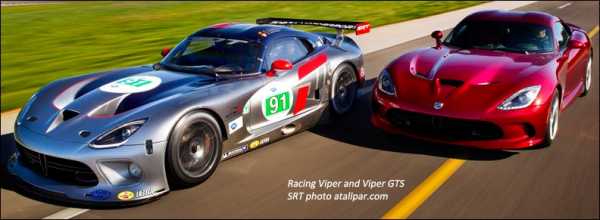
640 horsepower. 600 foot-pounds of torque. 100 pound weight reduction.
The 2013 SRT Viper was designed in Auburn Hills, by Americans, and was built in Detroit, “but we did consult with our friends in Ferrari and Maserati,” according to Ralph Gilles, to get their skills in low-volume products.
The 2016 Dodge Viper was rated at 0-60 in “the low 3-second range” and the quarter mile in the “11-second range,” stock. The 2014-16 Viper held the production car lap record at nine U.S. tracks.
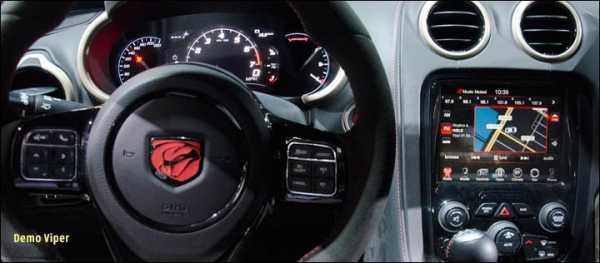
For 2014, Viper’s base price rose by $2,000, but included the Grand Touring Package and 12-speaker system, sold in 2013 for $4,495, and ordered by “nearly all buyers.” In June 2014, when SRT was folded back into Dodge, they brought the color and stripe scheme back to the original LeMans-winning appearance.
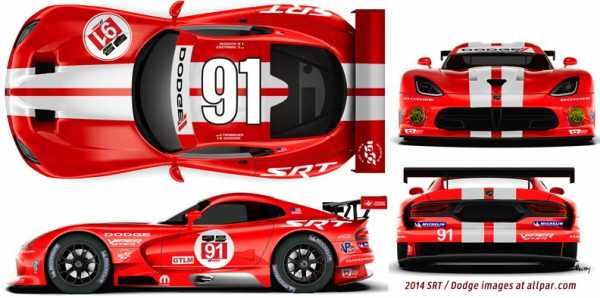
During the “three headed dog” time, as Ralph called it, they almost sold the Viper off; Sergio, though, said, “We don’t sell our own.” He mentioned the Hot Wheels car (pulling one out of his pocket), and said “As much as it’s been annoying to us, it’s been fun to watch the car being imagined on line.”
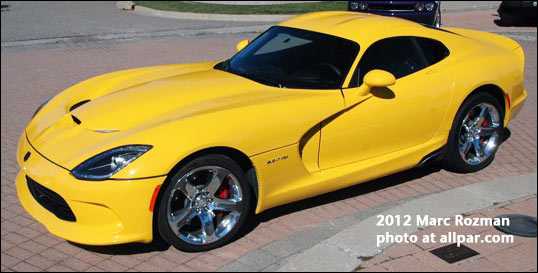 The car shows that “we still have a soul at Chrysler.” They looked at some platforms from Italy but decided to stick with what they had; they completely updated the frame (made by Metalsa), brought back the magnesium beam which stiffens the platform, and used new technology and aluminum to make it 50% stiffer than the 2010 Viper. The engine is more powerful but is still an 8.4 liter V10.
The car shows that “we still have a soul at Chrysler.” They looked at some platforms from Italy but decided to stick with what they had; they completely updated the frame (made by Metalsa), brought back the magnesium beam which stiffens the platform, and used new technology and aluminum to make it 50% stiffer than the 2010 Viper. The engine is more powerful but is still an 8.4 liter V10.
The Viper now uses super-formed aluminum on the sills and doors; the body is mostly carbon fiber, and is now 32% lighter (saving 100 lb). Owners demanded a clamshell hood and now have one; a composite intake manifold which flows better; the torque comes on earlier than before, and Viper still has the highest torque of any naturally aspirated car in the world.
Launch control
To help maximize straight-line performance in track conditions, all SRT Viper models will include launch control (and traction control) as standard equipment.
From any stability-control mode including Full Off, the system can be engaged by a button on the steering wheel while the car is at a stop. Then, mashing the pedal down won’t merely smoke the rear tires; the computer holds the engine at optimal launch rpm and waits for the driver to release the clutch. Launch control then uses engine throttle only to achieve controlled wheelslip, for maximum acceleration through first gear.
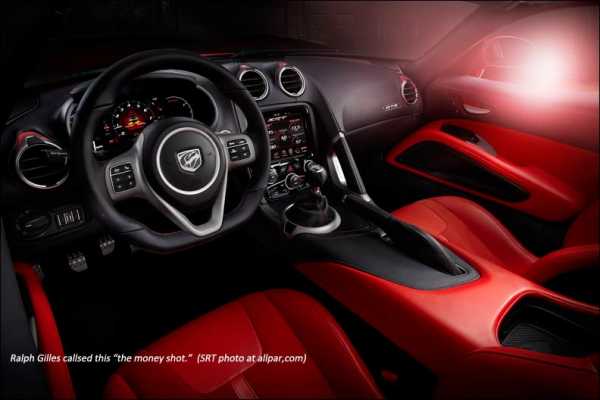
Track Pack
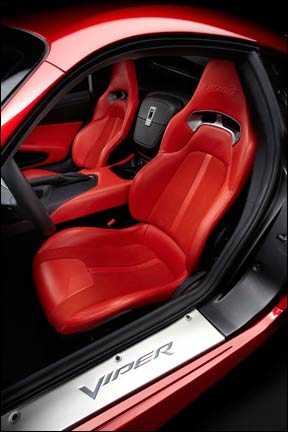 Track Pack takes another 57 pounds off for the lightest Viper ever, 3297 pounds, 5.15 lb/hp all together. Using dry weight (3,143 lb), as many competitors do, the Viper is at 4.91 pounds/horsepower.
Track Pack takes another 57 pounds off for the lightest Viper ever, 3297 pounds, 5.15 lb/hp all together. Using dry weight (3,143 lb), as many competitors do, the Viper is at 4.91 pounds/horsepower.
| Dry hp:weight ratios (SRT numbers) | |
| Bugatti Veyron | 4.10 |
| Ferrari F12 | 4.70 |
| SRT Viper | 4.91 |
| Lamborghini Aventador | 4.96 |
| Corvette ZR1 | 5.01 |
| Porsche 911 Turbo | 6.22 |
For the first time, Viper has cruise control. Two mode adjustable suspension. It has the 7 inch screen, as used on Dart, but heavily customized, and an 8.4 inch flat screen stereo, also customized (the Harman Hardon surround-sound system drives up to 18 speakers through up to 11 channels, using rare-earth magnets and double the power of the old system). The seats allowed a 90 mm increase in interior space. There are many different interiors, truly making it custom.
Ralph Gilles himself drove the Viper onto the stage.
The car is also debuting in the Forza videogame, and Forza was the first company to test drive the Viper; they put together a video, which is the one that was leaked the day before. A real racing Viper was brought in, a silver one, built for the American LeMans team — with four drivers.
Pricing appears to be set at $137,000, according to “kdaviper.” There’s been absolutely no official word.
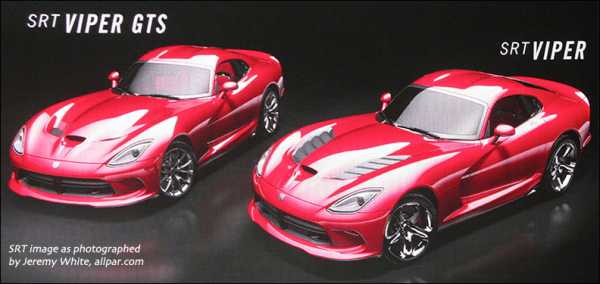
The standard Viper has a more traditional look, with the black hood vents, and a plainer interior, with fewer features. The Viper GTS has more comfort features and a more refined look. Inside, choices of fabrics and dash covers provide many options — a Fiat trademark borrowed by SRT.
Engineering: 2013 Viper frame and chassis
Nearly every chassis system has been re-engineered to increase performance and shed weight while keeping a near perfect 50/50 weight distribution. For 2013, the Viper has shed more than 100 pounds with numerous chassis refinements including a new spaceframe with high-strength steels; carbon fiber and aluminum body panels; lighter wheels; and a lighter engine.
The 100% boxed frame has enhanced strength and stiffness; it has been re-engineered and is far stiffer.
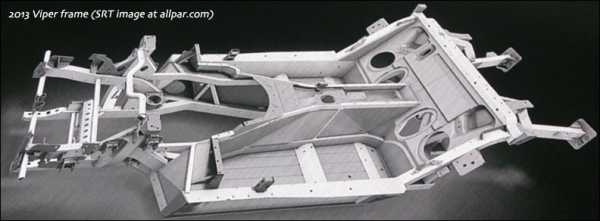
Russ Ruedisueli, Vehicle Line Executive – SRT Viper, wrote, “Design and engineering development for the SRT Viper extends far beyond the normal cycles of most sports cars. All SRT vehicles including the Viper must pass the rigorous torture of a 24-hour endurance test that simulates racing conditions.”
A new structural X-brace ties the four corners of the engine compartment together; borrowed directly from Viper GTS-R and Competition Coupe race models, the aluminum brace enhances steering response and makes the entire car stiffer. A new aluminum impact beam at the front of the 2013 SRT Viper also contributes to overall mass savings and weight distribution, while increasing crashworthiness. A cast-magnesium, machined front-dash structure stretches across the full width of the car. Greater structural integrity at the suspension pickup points allowed SRT to better tune the damper.
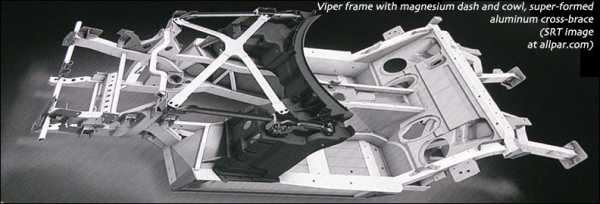
The Viper continues with its front mid-engine layout that has the engine set back fully behind the centerline of the front wheels. The engine also is offset 40 mm to the right, which contributes to more area in the driver foot well for ideal placement of the throttle, brake and clutch pedals. More importantly, the offset helps cross-car weight distribution with the driver, increasing track performance. It might, however, prevent Viper from being made in a right-hand drive configuration for the UK, Japan, Australia, New Zealand, and other RHD markets.
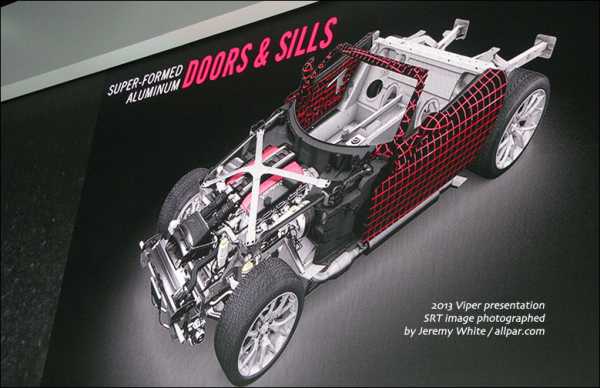
Viper body engineers were able to achieve the provocative body shapes and effectively reduce mass with the use of lightweight materials including composites and super-formed aluminum. The roof, hood and hatch are constructed of high strength carbon fiber while the entire door structure and panels are lightweight aluminum. (By weight, the Viper body is 44% carbon fiber, 27% aluminum, and 22% composites.)
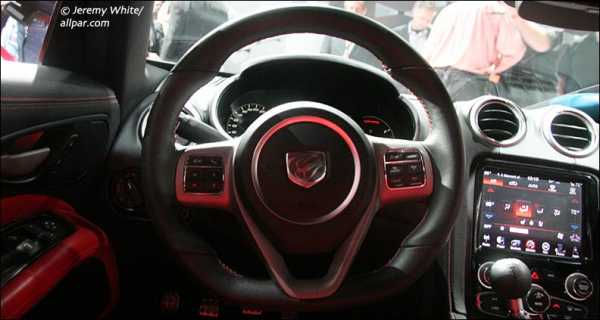
Viper Venom
Several Viper models are reportedly planned, including one unexpected name: the Viper Venom. While there have been Viper SRT10 and GTS models (the latter being a racing variant), Venom is new. The name was used in 1994, during Chrysler Corporation's comeback, for a rear-wheel-drive Dodge concept car with Viper cues and classic-Charger-style doors, and may have been a design study for the second-generation LH cars. The name was also used by Hennessy's short-run adapted Vipers, and, more recently, for a paint color.
Some additional information supplied by Automotive Engineering International
Also see:
25 Years of Dodge Vipers at Allpar
| At the Conner Avenue plant | |
| Viper Prototype |
How Dodge Vipers are built • Plastic and resin body parts • Conner Avenue Plant • 2013 Viper Event
2013-17 SRT and Dodge Viper: Engine, Transmission, and Axles
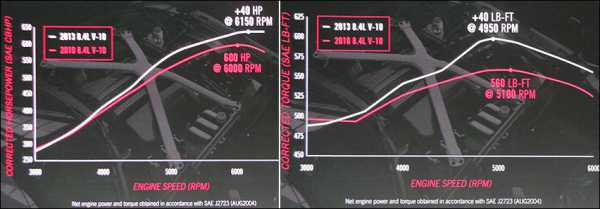
The iconic hand-assembled 8.4-liter all-aluminum V-10 engine continued, upgraded again with improvements in oiling, airflow and an industry-first single-cam variable-valve timing system, boosting power to 640 hp at 6,150 rpm and 600 lb-ft at 4,950 rpm.
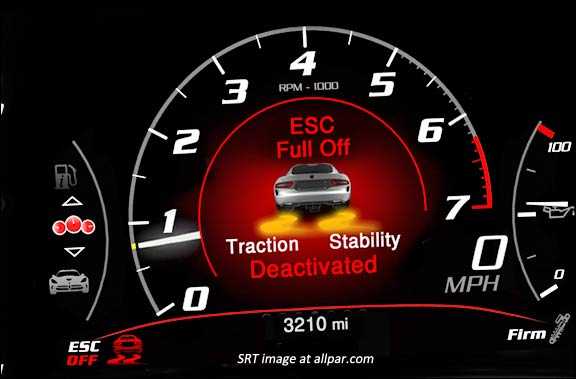 For 2013, the engine had a new high-flow, composite intake manifold, new forged pistons, new lightweight, sodium-cooled exhaust valves, and an aluminum flywheel, as well as new catalysts to reduce back pressure. Sodium is added to the exhaust valve stem for better heat transfer and helps prevent hot spots in the valve head and combustion chamber that can lead to engine knock.
For 2013, the engine had a new high-flow, composite intake manifold, new forged pistons, new lightweight, sodium-cooled exhaust valves, and an aluminum flywheel, as well as new catalysts to reduce back pressure. Sodium is added to the exhaust valve stem for better heat transfer and helps prevent hot spots in the valve head and combustion chamber that can lead to engine knock.
The result is an improvement of 40 lb.-ft. of torque and 40 horsepower, with weight savings of more than 25 pounds for the fully dressed engine.
The Tremec TR6060 six-speed transmission has been refined with tighter gear ratios and a shorter-throw (by 12%) shifter. The final -drive ratio has been shortened to 3.55 from 3.07, giving the 2013 SRT Viper even more voracious and effortless acceleration at all speeds. The sixth gear provides more power at the higher rpm ranges of the engine (Ralph Gilles said they can now be used more often, rather than only in highway cruising; and the car now achieves top speed in 6th rather than, as before, in 5th). The leather-wrapped shifter assembly is connected directly into the transmission to eliminate levers and pivots. The result is a direct-mount shift system that provides a solid and precise shift feel.
The 90-degree, deep skirt block uses high-strength cast T356 aluminum and includes cast-iron bore liners, strengthened bulkheads for block rigidity, and improved water jackets for consistent temperatures across the engine. The bore and stroke of the cylinders are 103 mm by 100.6 mm (respectively); compression is 10.2:1.
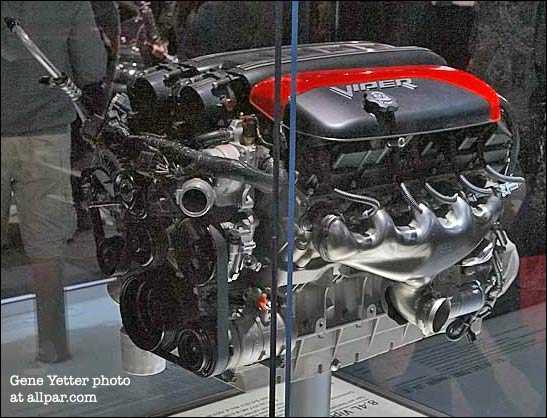 The forged-steel crankshaft is supported by six main journals with cross-bolted, four-bolt, main-bearing caps, two vertical and two horizontal. Forged, powder -metal connecting rods measure 158.6 mm. Forged aluminum pistons are 10 g lighter than the prior design, and designed for lower friction; reduced diameter, full-floating 24 mm piston pins are new. New steel piston rings also reduce friction with a 1.5 mm top and a 1.2 mm second ring width.
The forged-steel crankshaft is supported by six main journals with cross-bolted, four-bolt, main-bearing caps, two vertical and two horizontal. Forged, powder -metal connecting rods measure 158.6 mm. Forged aluminum pistons are 10 g lighter than the prior design, and designed for lower friction; reduced diameter, full-floating 24 mm piston pins are new. New steel piston rings also reduce friction with a 1.5 mm top and a 1.2 mm second ring width.
The aluminum flywheel reduced weight by 11 pounds, and includes a steel outer-ring gear and friction wear surface for durability. When combined with a twin plate 240 mm twin-disc clutch, the flywheel cuts overall rotating inertia by 20%, good for roughly 1/10th of a second reduction in 0-to-60 acceleration and better performance in lap times on a typical road course by approximately 0.5 seconds. (Together, the composite intake and revised block cut 17 lb.)
For improved cooling, particularly at the rear cylinders, the head gaskets have been redesigned through the use of computer simulations, validation and extensive testing to provide more balanced cooling across all cylinders.
With optimized coolant flow, a more balanced cylinder-to-cylinder temperature distribution allows for improved performance.
Oil system
The 8.4-liter V-10 cast-aluminum oil pan is fitted with special baffles, channels, and scrapers to funnel engine oil back into the sump, and serves as a structural component to reduce powertrain bending.
A unique, race-proven swinging arm oil pickup moves with relationship to G-forces encountered in tight-track turning conditions, acceleration and braking conditions. Exclusive to the Viper, the swinging pickup moves within the oil pan to ensure that the maximum amount of oil is available to the engine without any losses due to side-to-side sloshing in the pan.
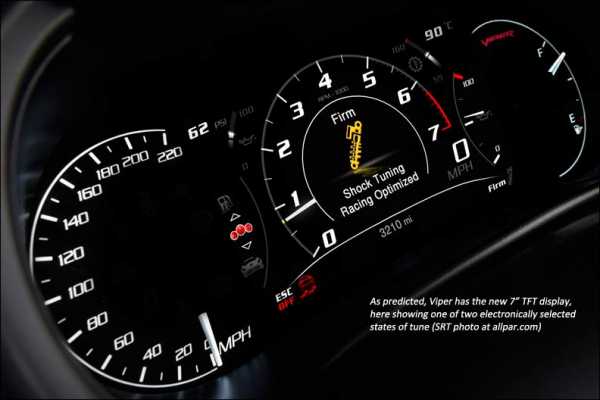
A single gerotor oil pump provides the pressure for the oiling system and is directly driven off the crankshaft. The engine oil cooler is standard.
Oil change intervals are recommended at 6,000 miles, using Pennzoil 0W40 synthetic motor oil only. The crankcase capacity with filter change is 10.5 quarts. A special SRT-designed oil filter is needed.
The intake assembly is new, using a lightweight composite intake manifold for better fuel/air distribution, excellent thermal capabilities, and reduced weight. Its runners are around one inch longer, and the move to composite from aluminum reduced air charge temperatures significantly.
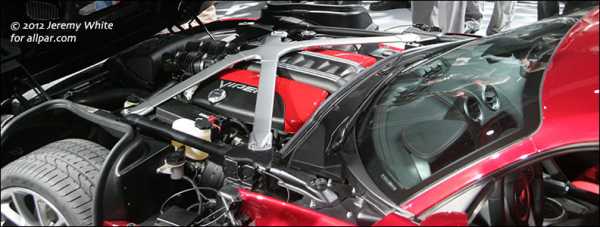
- New, electronically controlled twin throttles dramatically improve throttle response and control.
- Pushrods are 10 percent stiffer with wall thickness increased from .06 inch to .08 inch.
- Heat transfer, particularly during short hot-soak conditions, is lower; the composite intake has better insulating characteristics to ensure a cool intake charge for improved response and power.
- Like the block, heads are constructed of high-strength, T356 aluminum. The chambers have been CNC machined for flow and charge motion. Structural changes increased durability.
- Combustion chambers are 72 cc in volume. Intake and exhaust valves are both angled at 12 degrees. Lightweight, hollow-stem, intake valves measure 52.8 mm (exhaust valves are 40.8 mm).
- Valves are actuated by a single assembled camshaft in the block. The Viper engine uses a unique roller-type cam-in-cam design that enables independent exhaust phasing relative to the intake. According to Ralph Gilles (speaking with Allpar’s Jeremy White), the cam lobes are new, with a more aggressive slope.
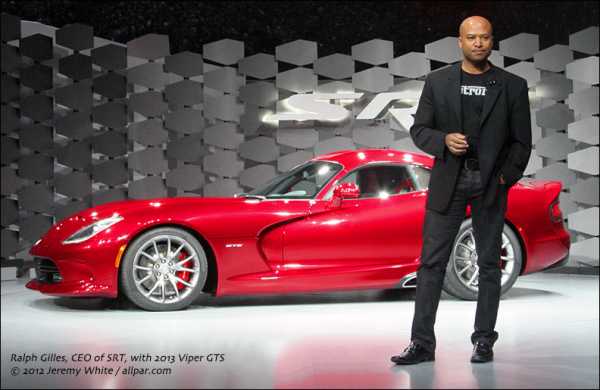
- Viper’s 600 lb.-ft of torque make it the highest torque of any naturally aspirated automotive engine in the world.
- The intake profile has been revised to provide more usable torque at the higher rpm ranges of the engine.
- The V-10 is equipped with variable-valve timing (VVT) on the exhaust side.
- Ignition is through 10 individual coil packs mated to dual-platinum spark plugs. Spark plugs have been designed for a 100,000-mile change interval.
- Stainless steel tube-in-shell exhaust headers reduce restriction and backpressure. Revised tuning provides a more distinct character at part throttle and authoritative tone at a higher rpm with quieter sound at a mid-range rpm.
- A revised catalyst wash coat system reduces backpressure by nearly 20%.
- Viper now includes a new powertrain mounting system that uses two hydromounts for the engine. Made of highly elasticized rubber, filled with a fluid, the hydromounts offer superior damping characteristics.
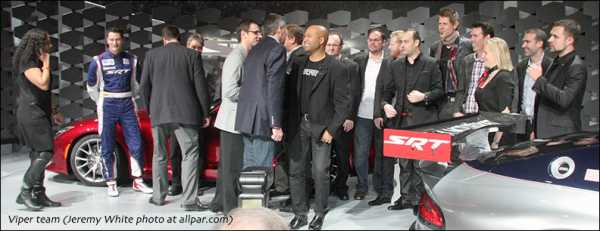
Also see:
25 Years of Dodge Vipers at Allpar
| At the Conner Avenue plant | |
| Viper Prototype |
How Dodge Vipers are built • Plastic and resin body parts • Conner Avenue Plant • 2013 Viper Event
2017 Dodge Viper SRT Review, Ratings, Specs, Prices, and Photos
In its distant past, the Dodge Viper had a bad-boy reputation—one that it earned with delicate handling and a tendency toward copious oversteer. Even in the right hands, it was still a handful.
Over a few generations, the Viper's grown up a lot. It's become a more balanced machine, with a better interior, better tire choices, and the all-important stability and traction control that make it usable in everyday driving. That doesn't mean it's no longer a bad boy—just one with better manners.
It's still not quite as genteel as a Chevy Corvette or a Porsche 911, and for that, the Viper remains a singular choice.
Review continues below
The Viper ears a respectable 6.8 overall on our ratings scale thanks to its beautiful shape and superlative performance. It's a fitting tribute to the car that has been around for so long. (Read more about how we rate cars.)
The current Viper dates back to the 2013 model year, and 2017 will be the car's last model year. To commemorate the end of production, as well as the car's 25th anniversary, Dodge has introduced a series of six special edition models.
The special edition models include:
Viper 1:28 Edition ACR: This model pays tribute to the current ACR's lap record of 1:28.64 at Laguna Seca Raceway. Already sold out, each of the 28 cars features a black exterior, a painted rear wing, red ACR stripes, an aero package, and carbon-ceramic brakes. All 28 models sold in 40 minutes, according to Dodge.
Viper GTS-R Commemorative Edition ACR: This special edition sports the color scheme from the 1998 Viper GTS-R GT2 Championship Edition. It wears pearl white paint, blue pearl GTS stripes, an aero package, and carbon-ceramic brakes. All 100 units sold out within a few days of its release.
Viper VoooDoo II Edition ACR: Modeled after the the 2010 VooDoo edition, this Viper features black paint with a graphite metallic ACR driver's stripe and a red tracer outline, an aero package, and carbon-ceramic brakes. All 31 units sold out in a few hours.
Viper Snakeskin Edition GTC: Inspired by the 2010 Snakeskin ACR, this Viper features green paint with a patterned SRT stripe, an aero package, and a black interior. All 25 were sold almost immediately.
Viper Snakeskin ACR Edition: Also inspired by the 2010 Snakeskin ACR, this model is painted Snakeskin Green with a custom snakeskin-patterned stripe. It comes with the Extreme Aero Package, carbon ceramic brakes, a serialized instrument panel Snakeskin badge, and a custom car cover that matches the exterior paint scheme and has the customer's name printed above the driver’s side door. A total of 31 are offered, just like in 2010. Those models will go on sale in mid July.
Dodge Dealer Edition ACR: Sold only at two of the top-selling Viper dealers—in Tomball, Texas, and Roanoke, Illinois—this Viper features a white exterior with a competition blue racing stripe, an Adrenaline Red driver stripe, carbon-ceramic brakes, and an aero package. Those editions were sold in roughly five days.
Other than the special edition models, the Viper gets no updates for 2017, though the GT model is dropped.
The rest of the Viper lineup includes the base Viper SRT, the GTC, the GTS, and the track-focused ACR.
Among the Viper trim levels, there are some important handling differences that become important if you plan to drive it daily or track it instead. The base car is a basic canvas for weekend racers. The GTC and GTS models get adaptive dampers and upgraded electronic controls that make them more livable for everyday driving. The ACR model, which was added for the 2016 model year, features Bilstein coil-over racing shocks, carbon-ceramic brakes, and Kumho Ecsta tires. It is also offered with an aero package that includes a carbon-fiber wing, diffuser, louvered hood, and an extendable front splitter.
Pricing starts at about $90,000, including a $2,100 gas guzzler tax and a $2,495 destination charge, and ranges up close to $120,000 for an ACR.
The Viper's design is rippling with muscles, with some threatening vents and intakes scarred along its low-slung body. The menacing supercar details meet up with a cockpit that's the nicest ever installed in a Viper, with touchscreen interfaces and fragrant Ferrari-esque leather seats.
The sole source of power for the Viper remains unchanged since a 5-horsepower bump for the 2015 model year. It's a massive 8.4-liter V-10, with 645 horsepower, fed through a Tremec 6-speed manual, shuttling power to the rear wheels. The massive 600 pound-feet of torque is the most delivered by any naturally aspirated sports car on the planet. Performance is mind-bending: 0-60 mph runs take about three seconds; quarter-miles fly by in the low 11s; 0-100-0 mph takes less than 12 seconds; and top speed ranges from 177 to 206 mph, depending on how much aero is added.
The supercar game is not all about straight-line performance, however, and the Viper shines when it's time to turn, too. This generation of Viper is the first to be equipped with stability and traction control, and, fortunately, they don't kill the fun. In fact, even in full-on mode, the stability control allows for yaw and slip angles suitable to spirited track-day antics. With everything fully off, the Viper is well balanced, transitioning from entry to apex to exit with massive grip and surprising feel through the steering wheel and driver's seat. The ride quality is fair in base models, a bit better with the adjustable dampers, but never really objectionable for a sports car.
The Viper's cabin is surprisingly roomy for such a low-slung coupe. Dodge claims drivers up to 6-feet-7-inches tall should fit within its confines. There's plenty of head room and leg room for most drivers, and the seats are both comfortable and adjustable. The steering wheel and pedals also move to get the best possible fit. You'll want as much physical comfort in the Viper as possible, as it's a very noisy place to be, even cruising at low engine speeds on a smooth country road. Cargo space is fair, at 14.65 cubic feet, but the odd shape under the rear hatch means soft-sided bags will be the best bet for longer trips.
Expensive, low-volume sports cars are often skipped in the crash-testing cycle by the NHTSA and the IIHS, and the Dodge Viper is no exception. Despite the lack of crash tests, the Viper should prove as safe as most modern coupes in an accident. A backup camera is available on the base model, and standard on the GTS.
Gas mileage, as you might expect, isn't one of the Viper's primary concerns; it's rated at 15 mpg combined.
"Питер - АТ"
ИНН 780703320484
ОГРНИП 313784720500453
